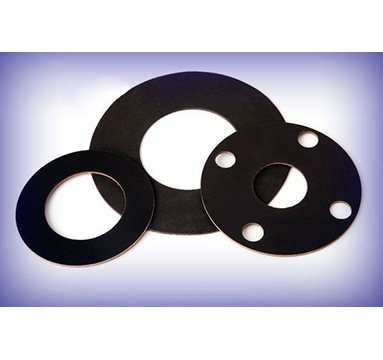
Neoprene Faced Phenolic Gaskets have been used as standard “flat” isolating gaskets in the oil and gas industries for many years. Soft neoprene rubber sheets are factory applied to both sides of a laminated phenolic retainer providing an effective sealing surface. The temperature limit of these gaskets is approximately +175º F. (+80º C.).
Application of Neoprene Faced Phenolic Gaskets:
To limit the extent and cost of cathodic protection current to only those pipes that need to be protected from the main cathodic protection system
To electrically "split up" long pipelines into distinctive cathodic protection systems
To isolate a pipeline to ensure that cathodic protection or stray electricity currents do not cause increased corrosion, or cause a hazard
To isolate piping systems where dissimilar metals are present
To eliminate static loading charge transfer in discharge or loading operations at oil storage terminals
Gasket Type:
Type E (Full Face Gasket)
This gasket kit provides complete protection of both flange faces. The gasket has same outside diameter of flanges. This feature will prevent collection of foreign matter between the flange faces to ensure complete cathodic isolation.
Type F (Ring Gasket)
This gasket is manufactured to fit only the raised face surface of the flanges. Outside diameter of the gasket is designed to be slightly less than the inside diameter of the bolt circle. It is recommended that the flanges be wrapped to prevent foreign material from "shorting out" the flanges.
Performance of Neoprene Coated Phenolic Gaskets:
|
Material
|
Dielectric Strength
|
Water Absorption
|
Compressive Strength
|
Maximum Temperature
|
|
|
Plain Faced Phenolic
|
500Volts/Mil
|
1.6%
|
25,000psi
|
-54 to +104 ° C
|
|
|
Neoprene Faced Phenolic
|
500Volts/Mil
|
1.6%
|
25,000psi
|
-54 to +79 ° C
|
|